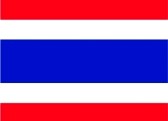All Categories
Extract of the Master Techniques for Shakuhachi: Japanese Bamboo Flute
Share Tweet
*Price and Stocks may change without prior notice
*Packaging of actual item may differ from photo shown
- Electrical items MAY be 110 volts.
- 7 Day Return Policy
- All products are genuine and original








About Extract Of The Master Techniques For
The extremely important core of music or even of our life is; expansion for freedom. Freedom to play music without chain or any restriction. In order to be free we need to open our mind and body. However it is easy to say but, it is difficult to do. Then how to open up our whole body depends on how steadly and concretely start and keep going forward to reach our goal step by step. That is about this book from my 50 years experience. We start from basic breathing, simple posture and gradually we check each part of the body some are visible (we say outer-muscles), some are difficult to see or touch (inner muscles) including organs like throat, inside mouth, diaphragm, and back-muscles. In order to check our whole body since we have around six hundred muscles (it is plenty), so we need to do gradually herefore, you could open and read this book wherever you feel comfortable (you don’t have to start reading from first page; just open the book and enjoy that page. And when you feel start reading from the first page, then that is the time to organize your idea of managing the whole body. But don’t force yourself because it is good to maintain the free-attitude for anything. Music Institute of America The Japanese Music Institute of America (JMI) was founded by Masayuki Koga in 1981 to introduce the highest quality of Japanese Classical music for Shakuhachi (Japanese bamboo flute) to the U.S. Since then, JMI has fostered the appreciation and study of traditional Japanese music. Each year JMI receives far more requests than it can possibly accommodate for low or non-fee supported performances from a variety of Japanese social, religious and cultural organizations. Generally, these requests fall into the category of: 1) Japanese seasonal celebrations, e.g. summer “obon,” spring “cherry blossom”; 2) Buddhist/Shinto shrine anniversaries; 3) lecture/demonstrations, e.g. Stanford University and New York University in Eastcoast; and, 4) public festivals. Yearly audiences for the



























